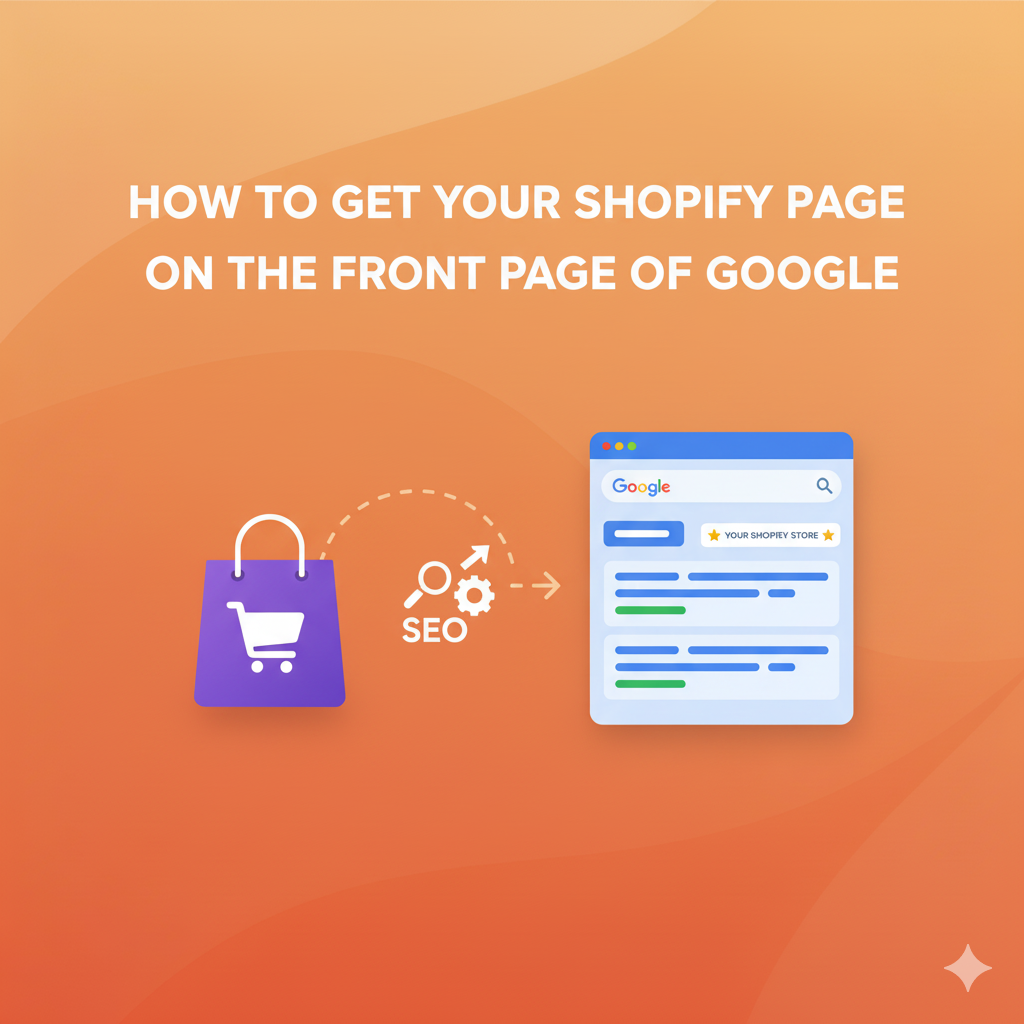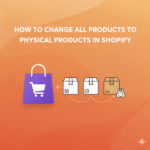If you run a Shopify store, showing up on the first page of Google can completely change your sales. Most shoppers search on Google before buying anything. If your store appears at the top, you get more clicks, more trust, and more conversions.
But getting on Google’s front page is not magic. It is a combination of using the right keywords, building trust, improving user experience, and publishing helpful content consistently.
This guide will teach you step-by-step how to make your Shopify pages rank on Google, even if you have no SEO experience.
Let’s start from the basics.
Why Ranking Your Shopify Page on Google Matters
More than 90% of online experiences begin with a search. And Google’s first page gets almost all the attention.
If your Shopify product page or collection page appears on page 2 or 3, customers will simply never find it.
Ranking high helps you:
• Get free traffic without paying for ads
• Increase sales steadily
• Build long-term brand authority
• Compete with bigger brands
• Reduce marketing costs
Now let’s understand what you need to do.
How Google Decides Which Shopify Pages to Rank
Google ranks pages that are:
- Useful and relevant to what people search
- Easy for users to navigate
- Quick to load on any device
- Trusted based on backlinks
- Well-structured and easy for Google to understand
This means:
If your Shopify page helps users the most, Google pushes it up automatically.
Step 1: Understand What Your Customers Are Searching For
Before optimizing anything, you need to know exactly what people type on Google when they are looking for products like yours.
Most Shopify owners make the mistake of guessing keywords.
But keyword selection must be based on real data.
Instead of just targeting broad terms like “shoes,” target keywords such as:
• “best running shoes for women under 2000”
• “vegan leather handbags India”
• “organic cotton baby clothes online”
These types of keywords convert better and are easier to rank for.
How to understand your customer’s search:
• Read your competitors’ product descriptions
• Check Google’s auto-suggest and “People also ask”
• Look at Amazon product titles
• Talk to your customers directly
• Analyze your website search bar queries
Your goal is to match search intent. If a user is looking for a guide, write a guide. If they are looking to buy, optimize your product page.
Step 2: Improve Your Shopify Content to Make It More Helpful Than Competitors
Google rewards pages that genuinely help users.
Most Shopify stores copy descriptions from suppliers. Google ignores these pages.
To rank, create original, detailed content that answers questions buyers usually have.
For product pages, include:
• Material information
• Size guides
• Usage instructions
• Care instructions
• Who the product is best for
• Unique selling points
• Comparison charts
• Customer benefits
For collection pages, include:
• A short buying guide
• Category overview
• Best-selling items
• What makes this category special
• Filters and sorting suggestions
The more useful your content, the higher your chances of reaching page one.
Step 3: Make Your Shopify Store Easy to Navigate
Google pays attention to how users move through your site.
If they find everything easily, they stay longer, which helps ranking.
Your store should have:
• A simple main menu
• Clear product categories
• No unnecessary clicks
• A visible search bar
• Breadcrumbs (Home > Category > Product)
• Clean URLs without long strings
Good navigation signals to Google that your website is helpful and trustworthy.
Step 4: Improve User Experience (UX) to Reduce Bounce Rate
If users click your page and leave quickly, Google pushes you down.
To avoid this, improve:
1. Readability
Use:
• Short paragraphs
• Simple words
• Bullet points
• Clear fonts
• Contrast between text and background
2. Professional Images
High-quality images increase time spent on page.
Offer:
• Multiple angles
• Zoom-in shots
• Lifestyle images
3. Fast checkout
A faster, cleaner checkout reduces drop-offs.
4. Trust signals
Show:
• Reviews
• Good return policy
• Secure payment badges
This improves user confidence—Google notices this engagement.
Step 5: Increase Time on Site With Rich Media
Adding rich media helps you stand out.
You can add:
• Explainer videos
• Size-guide infographics
• Product demo videos
• Customer testimonial videos
• Before-after sliders
Rich content keeps people on your page longer, improving rankings.
Step 6: Create a Strong Internal Linking Network
Google understands your website better when you link pages to each other.
Examples:
• Collection → Product
• Blog → Product
• Product → Related Products
• Homepage → Best Sellers
Internal links help:
• Users explore more pages
• Google crawl your site faster
• Distribute authority across pages
A smart internal linking strategy can boost rankings significantly.
Step 7: Build High-Quality Backlinks to Increase Your Authority
Backlinks are one of the strongest ranking signals.
Google sees backlinks as votes of trust.
More high-quality backlinks = higher rankings.
Strategies to get backlinks for Shopify:
• Write guest posts in your niche
• Partner with influencers or bloggers
• Offer free samples to reviewers
• Get listed in niche directories
• Do PR outreaches
• Publish research-based content
• Collaborate with micro-influencers
Avoid buying backlinks. Google penalizes manipulative links.
Step 8: Optimize Collections and Product Filtering
Google loves well-structured category pages.
Improve your collection pages with:
• Category introduction text
• Clear filter options
• Logical grouping of products
• Schema markup
• FAQs at the bottom
A strong collection page can rank for high-traffic keywords and drive constant organic traffic.
Step 9: Publish Long-Form Blog Content Consistently
Blogging is one of the easiest ways to rank.
You should create:
• How-to guides
• Buying guides
• Product comparison posts
• Trend posts
• Listicles
• FAQs
• Tutorials
• Seasonal content
Each blog post brings new traffic and builds your authority.
Example blog topics:
• “How to choose the right running shoes for flat feet”
• “Top 10 organic skincare products for sensitive skin”
• “Best gifts under 1000 for birthdays”
Blogs increase your chances of ranking on Google with additional keywords.
Step 10: Make Your Shopify Store Mobile-First
Most shoppers browse from mobile.
If your site isn’t optimized for mobile:
• Text becomes hard to read
• Buttons overlap
• Page loads slow
• Images break
Google heavily prefers mobile-friendly sites since it uses mobile-first indexing.
Your Shopify theme must support:
• Responsive design
• Fast mobile loading
• Clean mobile navigation
• Tap-friendly buttons
• Minimal pop-ups
Always check your pages on different phones before publishing.
Step 11: Improve Page Engagement Signals
Google tracks how users behave on your page.
To improve engagement:
• Add related products
• Add FAQs
• Use customer reviews
• Add comparison charts
• Add size recommendation tools
• Add exit-intent popups
These elements keep users engaged, which boosts your ranking potential.
Step 12: Use Conversion Optimization to Boost SEO
SEO and CRO (conversion rate optimization) work together.
When more people click and buy, your page becomes more valuable to Google.
Examples of CRO improvements:
• Clear CTAs
• Sticky add-to-cart button
• Trust badges
• Live chat support
• Limited-time offers
• Free shipping thresholds
Higher conversions signal Google that your page satisfies user intent.
Step 13: Keep Your Shopify Technical SEO Clean
Technical SEO errors can stop Google from ranking your pages.
Check for:
• Broken links
• Duplicate pages
• Missing structured data
• Thin content
• Redirect chains
• Slow-loading scripts
• Missing canonical tags
A clean website gives Google confidence to rank you higher.
Step 14: Track Performance and Make Improvements
SEO is not one-time work.
You must keep improving based on data.
Track:
• Which pages get traffic
• What keywords bring clicks
• How users behave on page
• Which pages drop in ranking
• Where you lose customers in the journey
Simple tools:
• Google Search Console
• Google Analytics
• Shopify Analytics
Improve pages regularly for the best results.
Step 15: Offer Unique Experiences Google Wants to Reward
In 2025, Google focuses heavily on EEAT:
• Experience
• Expertise
• Authority
• Trust
To improve EEAT:
• Show expert opinions
• Add author names
• Add verified customer reviews
• Show behind-the-scenes manufacturing videos
• Display brand story
• Show certifications
• Include real photos instead of only stock images
Pages with high EEAT outperform generic Shopify stores.
Conclusion: Getting a Shopify Page to Google’s Front Page Is Achievable
You do not need to be an SEO expert.
You just need to follow a clear strategy:
• Understand your audience
• Provide high-quality content
• Improve user experience
• Build trust
• Publish helpful blogs
• Keep your site mobile-friendly
• Build backlinks
• Track and improve regularly
If you do these steps consistently, your Shopify pages will naturally climb to Google’s first page.
Discover more from PratsDigital
Subscribe to get the latest posts sent to your email.

